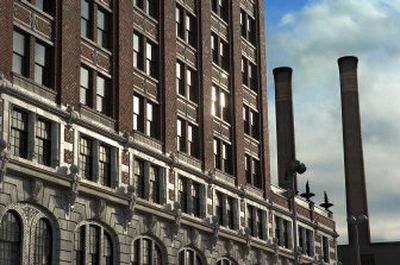Preserving past boosts economy

Historic restoration in Spokane has long been championed as preserving the character of the city.
But a new statewide study shows that preservation has also become a matter of dollars and cents.
Historic projects in Spokane generated $47 million annually in jobs, products and services from 2000 through 2004. The projects created 400 jobs on an annual basis, according to the study conducted jointly by a University of Washington geography professor and a private consultant.
“Preserving the physical reminders of our past creates a sense of place and community pride,” the study said. “Historic preservation also creates a wide range of economic benefits in Washington State.”
Statewide, the study showed that preservation projects resulted in annual sales of $221 million and supported $87 million in pay for 2,320 workers during the 2000 through 2004 period.
The Davenport Hotel restoration, completed in 2002 at $30 million, was a key project during the study period and has since become an anchor to revitalizing the western end of downtown, an area often called the Davenport Arts District.
State and city officials hope to expand on the economic value by marketing historic preservation as a tourist attraction.
Spokane’s historic preservation efforts recently won a designation on the National Preserve America Program. A $20,000 grant through the program is being used to develop a downtown historic tour with brochures and a Web site guide. The tour information will be available in the spring.
The state study showed that heritage tourism was worth $62 million in sales annually in Spokane and created 1,055 jobs worth $25 million each year.
The $31 million Fox Theater restoration in downtown Spokane is a newer example of the economic impact cited in the study and is expected to increase tourism spending once the Spokane Symphony and other groups start performing there.
Elizabeth Godlewski, development director for the Fox, said a separate study through Washington State University showed that the Fox can be expected to generate $16 million each year in salaries, ticket sales, restaurant meals, shopping and other entertainment.
“The ripple effect is just amazing,” Godlewski said.
Jack Williams, chair of the Governor’s Advisory Council on Historic Preservation, said the project’s success hinged on the Fox Theater organization reaching out to preservation proponents and then building broad community support through them.
Williams, of Seattle, said federal tax credits and state property tax breaks are two other important elements making historic projects viable.
He and other state preservation officials were in Spokane on Tuesday to talk about the economic study, which was completed in November.
In Spokane, the 1999 opening of Steam Plant Square at Avista Corp.’s aging heat plant near the Davenport set the tone for future restoration projects.
Ron Wells, of Wells & Co., said the challenge of redoing the rusting industrial facility into a complex of offices, shops and a restaurant has since proven to be economically viable. Wells & Co. is a managing partner with Avista in the Steam Plant restoration.
“This was just a pile of rusty metal in 1996,” Wells said.
A boiler was cut open and converted to a conference room. A coal bunker is being refinished for office space on the top floor. The landmark smokestacks were preserved as an icon of the downtown area.
“We get very creative tenants,” said Julie Wells, a partner in the project.